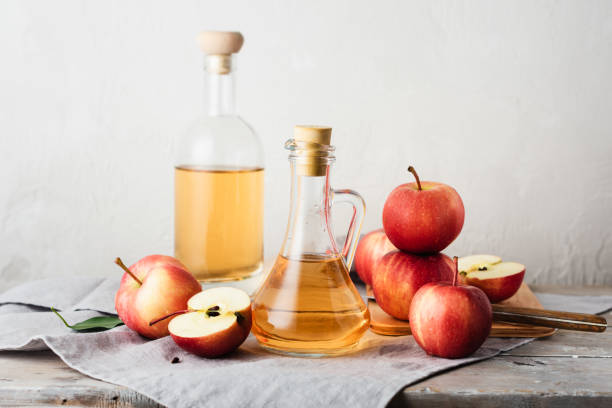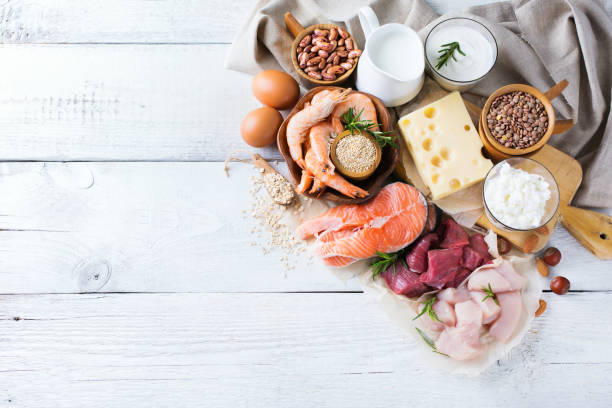Maintaining healthy blood sugar levels is crucial for overall well-being, especially for those with diabetes or insulin resistance. When blood sugar remains high for extended periods, it can lead to serious health complications, including nerve damage, kidney disease, and heart problems. However, the good news is that there are natural ways to help regulate blood sugar and keep it within a healthy range.
By making simple but effective lifestyle changes, you can improve your body’s ability to manage blood sugar. Eating a balanced diet, staying physically active, and managing stress are key factors in maintaining stable levels. These small adjustments can have a big impact on your long-term health and reduce the risk of complications.
Here are 10 proven strategies to help you naturally control your blood sugar and support overall wellness.
1. Drink Plenty of Water
Proper hydration is a simple yet powerful way to help regulate blood sugar levels. When your body lacks enough water, it produces more vasopressin, a hormone that signals your kidneys to hold onto fluids instead of flushing out excess sugar. This can lead to a buildup of glucose in your bloodstream, increasing blood sugar levels.
Why Hydration Matters
✔ Flushes out excess sugar – Water helps your kidneys remove extra glucose through urine.
✔ Prevents dehydration spikes – When dehydrated, your body may produce more glucose as a survival response.
✔ Supports overall health – Staying hydrated aids digestion, metabolism, and circulation, all of which impact blood sugar control.
Tips for Staying Hydrated
💧 Drink at least 8-10 glasses of water daily, or more if you exercise frequently.
🚫 Avoid sugary drinks like soda, fruit juices, and energy drinks, which can cause blood sugar spikes.
🍋 Add lemon, cucumber, or mint to your water for extra flavor without added sugar.
By making hydration a priority, you can naturally support balanced blood sugar and overall well-being.
2. Exercise Regularly
Staying active is one of the best ways to lower blood sugar naturally. When you exercise, your muscles use glucose for energy, reducing the amount of sugar in your bloodstream. Physical activity also boosts insulin sensitivity, helping your cells absorb and use glucose more effectively. Over time, regular exercise can lead to better blood sugar management and overall improved health.
Best Exercises to Lower Blood Sugar
🏃 Brisk Walking – A 30-minute walk can quickly reduce blood sugar levels.
🏋️ Strength Training – Lifting weights or using resistance bands improves insulin function over time.
🧘 Yoga & Stretching – These activities help lower stress hormones, which play a role in blood sugar control.
🔥 High-Intensity Interval Training (HIIT) – Short bursts of intense activity followed by rest periods can enhance glucose metabolism.
Tips for Blood Sugar-Friendly Workouts
⏳ Exercise within 30 minutes of eating to help your body use glucose more efficiently.
🩸 Monitor blood sugar levels before and after workouts if you have diabetes to stay within a safe range.
🚶 Stay active throughout the day – Even light activities like household chores, gardening, or stretching can help regulate blood sugar.
By making exercise a daily habit, you can improve your insulin sensitivity, burn excess glucose, and keep blood sugar levels stable.

3. Eat More Fiber
Fiber is essential for blood sugar control because it slows down sugar absorption, preventing spikes and keeping glucose levels steady. It also supports digestion, promotes gut health, and helps with weight management by keeping you full longer. A fiber-rich diet can improve insulin sensitivity and reduce the risk of diabetes-related complications.
Good Sources of Fiber
🌾 Soluble Fiber – Found in oats, beans, apples, carrots, and flaxseeds, this type of fiber slows glucose absorption and helps regulate blood sugar.
🥜 Insoluble Fiber – Found in whole grains, nuts, and vegetables, it aids digestion and promotes a healthy gut.
Tips for Adding More Fiber to Your Diet
📏 Aim for 25-30 grams of fiber daily to support blood sugar control.
🍞 Choose whole grains like quinoa, brown rice, and whole wheat instead of refined carbs.
🥗 Incorporate fiber-rich foods such as chia seeds, almonds, lentils, and leafy greens into your meals.
By increasing fiber intake, you can naturally stabilize blood sugar levels, improve digestion, and enhance overall health.
4. Manage Stress Levels
Stress can significantly impact blood sugar levels. When you’re stressed, your body releases hormones like cortisol and adrenaline, which signal the liver to produce more glucose. This can cause blood sugar levels to rise, even if you haven’t eaten. Long-term stress can also reduce insulin sensitivity, making it harder for your body to regulate glucose properly. Managing stress is crucial for maintaining stable blood sugar and overall well-being.
Ways to Reduce Stress
🧘 Deep Breathing Exercises – Practicing slow, deep breaths helps activate the body’s relaxation response and lower stress hormones.
🕰️ Meditation & Mindfulness – Just 10 minutes a day of meditation or mindful breathing can help calm your nervous system and reduce stress levels.
🎨 Engage in Hobbies – Activities like reading, painting, gardening, or playing music can distract your mind and promote relaxation.
😴 Prioritize Quality Sleep – Poor sleep increases stress and disrupts insulin function, leading to higher blood sugar levels.
By incorporating stress-reducing habits into your daily routine, you can help regulate blood sugar naturally and improve overall health.
5. Avoid Refined Carbs and Sugars
Refined carbohydrates can cause rapid spikes in blood sugar, followed by crashes that leave you feeling tired, hungry, and craving more sugar. These constant fluctuations can make it harder to manage blood sugar levels and increase the risk of insulin resistance over time. Cutting back on refined carbs and sugars helps keep glucose levels steady, boosts energy, and supports overall health.
Foods to Avoid
🚫 White Bread, Pasta, and Rice – These refined grains break down quickly into sugar, causing blood sugar spikes.
🍩 Pastries, Cakes, and Cookies – High in added sugars and unhealthy fats, they contribute to glucose imbalances.
🥤 Sugary Drinks & Processed Snacks – Sodas, energy drinks, and packaged snacks contain hidden sugars that disrupt blood sugar control.
Healthy Alternatives
🍞 Swap white bread for whole-grain bread to get more fiber and slow glucose absorption.
🍚 Replace white rice with brown rice, quinoa, or cauliflower rice for better blood sugar control.
🍯 Choose natural sweeteners like stevia or monk fruit instead of refined sugar to satisfy your sweet tooth without spiking glucose.
By making smarter food choices, you can prevent blood sugar crashes, reduce cravings, and maintain steady energy levels throughout the day.
6. Eat Apple Cider Vinegar
Apple cider vinegar (ACV) is a natural remedy that may help increase insulin sensitivity and reduce blood sugar spikes after meals. It works by slowing down carbohydrate digestion, preventing rapid glucose absorption, and supporting better blood sugar control. Some studies suggest that ACV can also aid in weight management and digestion, making it a valuable addition to a balanced diet.
How to Use Apple Cider Vinegar
🥤 Dilute in Water – Mix 1-2 tablespoons of ACV with a glass of water and drink before meals to support glucose control.
🥗 Use as a Salad Dressing – Drizzle ACV over salads or mix it into homemade dressings for a tangy, blood sugar-friendly boost.
🍖 Add to Marinades – Use ACV in marinades for meats and vegetables to enhance flavor while reaping its health benefits.
⚠ Tip: Avoid drinking ACV straight, as its acidity can damage tooth enamel. Always dilute it with water or mix it into food.
By incorporating apple cider vinegar into your diet, you can help stabilize blood sugar levels, improve digestion, and support overall health naturally.

7. Get Enough Sleep
Getting enough quality sleep is essential for blood sugar regulation. When you don’t sleep well, your body produces more stress hormones like cortisol, which can raise blood sugar levels and make insulin less effective. Over time, poor sleep can lead to insulin resistance, increased cravings for sugary foods, and weight gain, all of which impact glucose control. Prioritizing restful sleep can help stabilize blood sugar and improve overall health.
Tips for Better Sleep
🕰️ Stick to a Consistent Sleep Schedule – Go to bed and wake up at the same time every day, even on weekends.
📱 Limit Screens & Caffeine Before Bedtime – The blue light from phones and TVs can interfere with melatonin production, making it harder to fall asleep.
🧘 Create a Relaxing Bedtime Routine – Wind down with meditation, deep breathing, or reading to prepare your body for restful sleep.
🛏️ Keep Your Bedroom Cool & Dark – A comfortable sleeping environment helps improve sleep quality.
By making sleep a priority, you can support insulin function, reduce sugar cravings, and keep blood sugar levels balanced throughout the day.
8. Try Cinnamon
Cinnamon is a powerful spice that contains compounds known to improve insulin sensitivity and help lower fasting blood sugar levels. It works by slowing the breakdown of carbohydrates, which helps prevent blood sugar spikes after meals. Some studies suggest that regular cinnamon consumption may also support heart health and reduce inflammation, making it a great addition to a balanced diet.
How to Use Cinnamon
🥣 Sprinkle on Oatmeal, Yogurt, or Smoothies – Add a dash of cinnamon to your breakfast for a natural blood sugar boost.
💊 Take Ceylon Cinnamon Supplements – If using supplements, consult your doctor to determine the right dosage.
🍵 Add to Herbal Teas – Stir cinnamon into your tea for a warm, slightly sweet flavor that supports glucose control.
Tip: Choose Ceylon cinnamon over Cassia cinnamon, as it contains lower levels of coumarin, a compound that can be harmful in large amounts.
By incorporating cinnamon into your daily routine, you can help regulate blood sugar naturally while adding flavor and health benefits to your meals.
9. Eat More Healthy Fats
Incorporating healthy fats into your diet can help slow digestion, preventing blood sugar spikes and keeping you full longer. Unlike refined carbs, healthy fats provide steady energy and support insulin function, making them an important part of blood sugar management. They also promote heart health, brain function, and hormone balance, contributing to overall well-being.
Good Sources of Healthy Fats
🥑 Avocados – Packed with fiber and heart-healthy monounsaturated fats.
🥜 Nuts & Seeds – Almonds, walnuts, chia seeds, and flaxseeds provide healthy fats and essential nutrients.
🫒 Olive Oil & Coconut Oil – Great for cooking or drizzling over salads.
🐟 Fatty Fish – Salmon, mackerel, and sardines are rich in omega-3 fatty acids, which reduce inflammation and support insulin sensitivity.
Tips for Adding More Healthy Fats
🍽 Pair Healthy Fats with Fiber – Combining fats with fiber-rich foods (like avocado on whole-grain toast) helps stabilize blood sugar even more.
🚫 Avoid Trans Fats – Found in fried and processed foods, trans fats can increase insulin resistance and harm heart health.
By choosing healthy fats over processed alternatives, you can improve blood sugar control, stay full longer, and support overall health naturally.

10. Monitor Your Blood Sugar Levels
Regularly tracking your blood sugar can help you understand how your diet, exercise, and daily habits impact your glucose levels. Monitoring allows you to identify patterns, avoid spikes, and make necessary adjustments to improve blood sugar control. Over time, this awareness can help prevent complications related to high or low blood sugar.
How to Monitor Blood Sugar
🩸 Use a Glucose Meter or Continuous Glucose Monitor (CGM) – A traditional glucose meter provides spot checks, while a CGM offers real-time tracking throughout the day.
🍽 Check Levels Before & After Meals – This helps you see how different foods affect your blood sugar and adjust your diet accordingly.
📊 Make Adjustments Based on Readings – If you notice frequent highs or lows, consider modifying your meal choices, activity levels, or medication (under a doctor’s guidance).
Tip: Keep a blood sugar journal or use a tracking app to monitor trends over time.
By staying proactive about monitoring, you can better manage blood sugar, prevent sudden spikes or crashes, and work with your doctor to fine-tune your health plan.
Final Thoughts
Lowering blood sugar naturally is achievable with small, steady changes to your daily routine. Staying hydrated, eating fiber-rich foods, exercising regularly, and managing stress can all help keep your blood sugar levels stable and support overall health.
If you have diabetes or take medication for blood sugar control, consult your doctor before making significant changes to your diet or lifestyle. It’s always best to get professional guidance to ensure your approach is safe and effective.
For more expert advice on managing blood sugar, visit trusted sources like the American Diabetes Association or the Centers for Disease Control and Prevention.
Which of these tips have worked for you? Share your experience in the comments!
